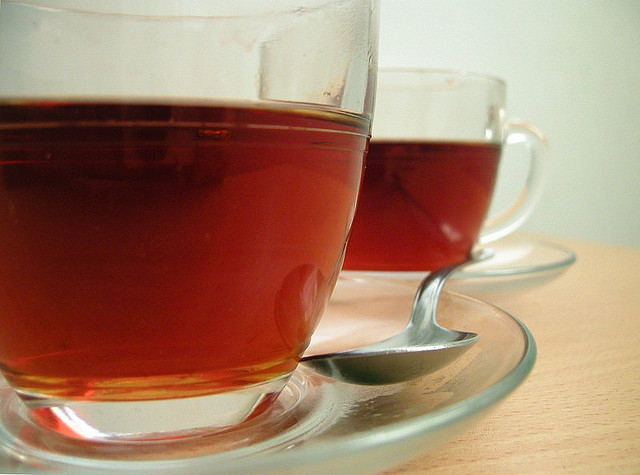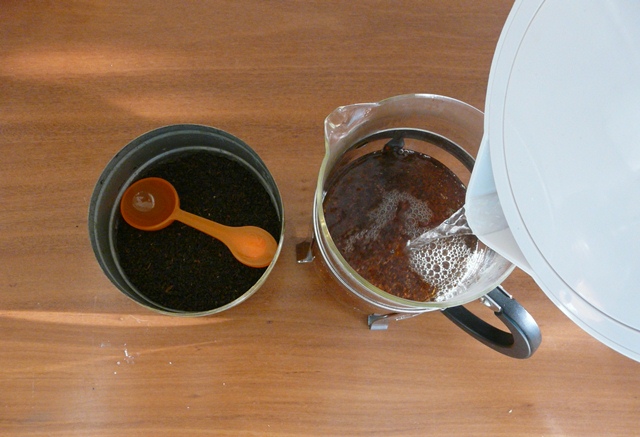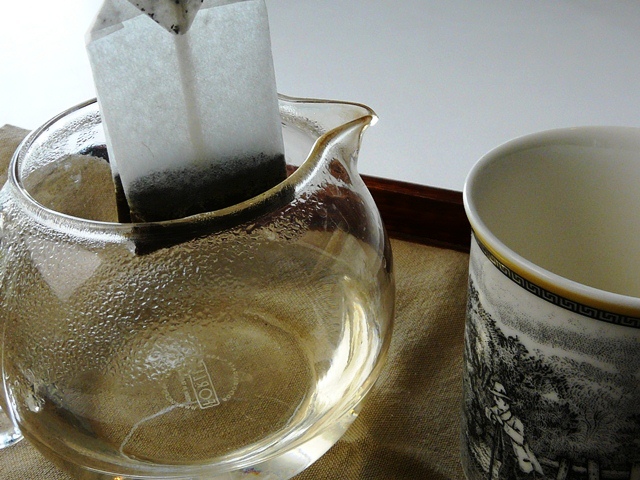- Home
- Blog
- Energy Boosters
- 7 reasons why I love to drink tea
7 reasons why I love to drink tea
Written by Catherine Saxelby
on Wednesday, 26 December 2012.
Tagged: antioxidants, caffeine, coffee, energy, fluids, healthy lifestyle, hydration, longevity, nutrition, super foods, water, wellness

There's nothing as refreshing and relaxing as a cup of tea. It's my favourite hot drink by a long way and one I look forward to every day. I drink almost every type of tea there is. English Breakfast with milk is my favourite but I'm also partial to a delicate Ceylon and most things herbal like lemon and ginger or anything with a little peppermint. The only tea I'm NOT fond of is Earl Grey.
The antioxidant boom in the 1990s
Until the 1990s no-one in nutrition took tea seriously. It didn't have any fat, protein or carbohydrate so we nutritionists never counted it in weight loss or diabetic diets. It wasn't particularly rich in any vitamin or mineral (although surprisingly there's some fluoride, folate and vitamin K) so it never got onto those list of nutrient-rich foods like yeast or spinach did.
It wasn't until the discovery of antioxidants that tea suddenly bounced into the limelight. I can still recall the research paper from 1993 which set the scene for tea. It was a Dutch study from a small town called Zutphen where the researchers discovered that the three biggest contributors to antioxidant (phyto-chemical) intake were tea, apples and onions.
Since then, there have been hundreds of studies published on green and black teas and they have reached the same conclusion – tea is healthy and can top up your flavonoid antioxidants, hold back the clock and protect your heart and blood vessels. All good reasons to reach for a cuppa.
My 7 reasons to love tea 
1. Tea refreshes and revives me
I like to call tea my "oasis of relaxation" in a busy day. For 10 minutes I sit down and relax with a 'cuppa'. I find that nothing picks me up as quickly when I need a recharge!
2. Tea gives me a useful dose of flavonoids
Tea is a great source of phyto-chemicals (antioxidants) known as flavonoids. Flavonoids keep your heart and blood vessels healthy by keeping the blood vessels 'flexible' and able to stretch in and out so your blood flows smoothly. They help reinforce our body's natural defence system and slow the ageing process.
They may have a protective role to play in preventing stroke and some cancers. Tea is also anti-inflammatory and antithrombotic. It can destroy bacteria and viruses which was handy in the early days when most water was not safe for drinking.
Black and green teas both contain similar amounts of flavonoids, however they differ in their chemical structure. Green teas contain more of the simple flavonoids called catechins, while the oxidisation that the leaves undergo to make black tea converts these simple flavonoids to the more complex types called theaflavins and thearubigins. All belong to the class of polyphenols. *
There is a link between regular tea consumption and heart health. Drinking three cups of tea per day may decrease the risk of heart problems by 11 per cent.
3. Tea re-hydrates me
We used the think that all our fluid should come from water but this has been overturned in recent years. Tea is a healthy beverage that can count towards your fluid intake for the tea. Nice to know in colder weather.
4. Tea helps me focus
Tea contains theanine, a natural amino acid, which helps me switch off distractions and focus on the job at hand, like writing this post. It works on the brain to enable me to stay alert yet relaxed. I suspect theanine is also part of that feeling of 'revive'. Seems it's the combination of caffeine plus theanine that does the trick – theanine appears to 'mellow' the acute negative effects of caffeine so you don't get that adrenalin jolt you get from coffee.
5. Tea adds hardly any kilojoules or calories
Tea without milk or sugar has zero kilojoules (Calories). The light 2% milk I use adds a mere 42 kilojoules (10 Calories). This helps me cut my intake so I can keep the kilos off as I get older.
6. Tea is low in caffeine
Tea helps me cut back on caffeine overall so I get a good night's sleep. I want a little caffeine but not so much that it makes my heart race nor upsets my stomach nor stops me sleeping. Which is why I drink tea.
Tea (and coffee) were once seen as 'evil' thanks to their caffeine which was regarded as an unnecessary stimulant.
Attitudes to caffeine have changed in recent years. Obviously you can take in too much but the consensus is that 300 to 400 mg of caffeine a day is no threat to healthy adults. Read more on how to cut down on caffeine if you need to.
Yes tea contains caffeine but only about half that of coffee. But bear in mind the amount of caffeine present depends on how long you brew your tea and the type of tea.
7. Tea is the best conversation starter
 Ever said to someone "I'll put the kettle on and let's talk"? Sharing a cup of tea is the easiest way to get something off your chest, discuss a problem or download your worries.
Ever said to someone "I'll put the kettle on and let's talk"? Sharing a cup of tea is the easiest way to get something off your chest, discuss a problem or download your worries.
Note: The points on flavonoids and theanine refers to regular black tea like English Breakfast or Ceylon or Assam as well as green, white and oolong teas. Most of the studies have been done on green teas as their flavonoids are simpler to analyse and are the favourite beverage in Japan and China where the majority of the studies originate. Herbals do not contain the flavonoids nor the theanine of black or green tea but have no caffeine so are useful at night.
* The term antioxidant is being phased out. I'm now going back to the original scientific term of phyto-chemicals to describe these important compounds in vegetables, fruit, tea, wine and dark chocolate. Or describe them by their chemical name which here is flavonoids.
How to make the perfect cup - two ways
1. Using tea leaves in a pot
Start with fresh cold (not hot) tap water to provide plenty of dissolved oxygen.
1. Make sure the water comes to the boil.
2. Warm the teapot or plunger with freshly-boiled water.
3. Use one level teaspoon of loose tea leaves per cup eg if you have a 4-cup teapot or plunger, I add 4 level teaspoons but I like my tea medium, not over-brewed or too-strong. Hence I don't follow the old rule of "one teaspoon per person plus one for the pot".
4. Infuse your tea for three to five minutes. Any longer and it begins to stew.
5. Add milk first to your cup then top up with the brewed tea (although huge debate ranges over milk in first or last!). I like a lot of milk in my tea so the milk has to be fresh. In tea, you can quickly tell if the milk is old. Don't do it.
6. Use a tea strainer or you'll end up with bits of leaves stuck in your teeth. Or put the tea leaves into an inner wire infuser which automatically strains the tea.
7. Alternatively add a slice of lemon.
2. Using a tea bag in a cup
Yes I know a tea bag doesn't produce the best tasting tea but sometimes there's no time to brew. Think of the office and all the cups of tea drunk there! A tea bag tastes better if you use a small teapot. Way better than making it in the cup!
Start with fresh cold (not hot) tap water to provide plenty of dissolved oxygen.
1. Make sure the water comes to the boil.
2. Warm the pot or cup with a bit of boiled water. Discard.
3. Pour the water over your tea bag; jiggle for 30 seconds, more if you like it strong - which I don't.
4. Pull out tea bag and squeeze. Discard.
5. Add milk or lemon slice.
Disclaimer: I've worked for the Australian Tea Industry and Lipton as their spokesperson on health issues from 1992 to 2010. Believe me, thanks to them, I've learnt so much about the science behind tea. Of all the foods I've worked with, tea is the one I've had to learn the most. FUNNY for something that we take for granted!
Reference quoted and link:
Hertog MG, Feskens EJ, Hollman PC, Katan MB, Kromhout D. Dietary antioxidant flavonoids and risk of coronary heart disease: the Zutphen Elderly Study. Lancet. 1993 Oct 23;342(8878):1007-11.http://www.sciencedirect.com/science/article/pii/014067369392876U
Photo credits
From ned the head, Flооd, naama via photopin cc
You may also be interested in...
Foodwatch
The Good Stuff
The Boring Stuff
© 2025 Foodwatch Australia. All rights reserved
Website by Joomstore eCommerce







